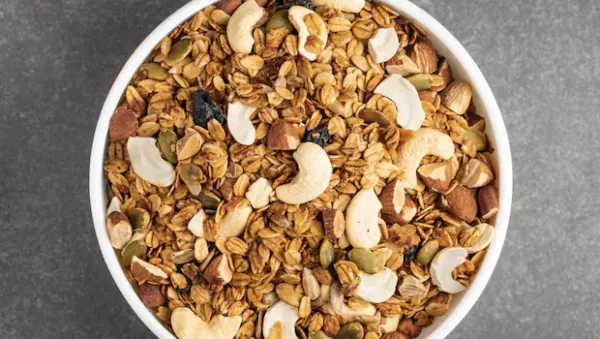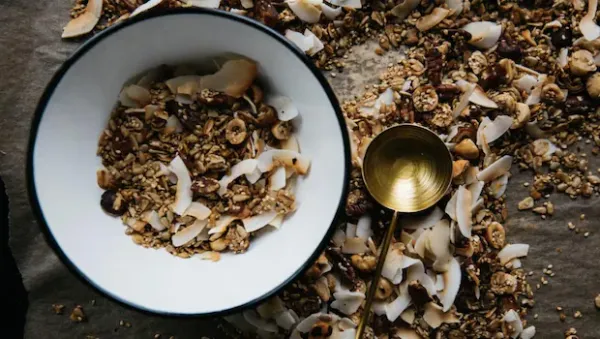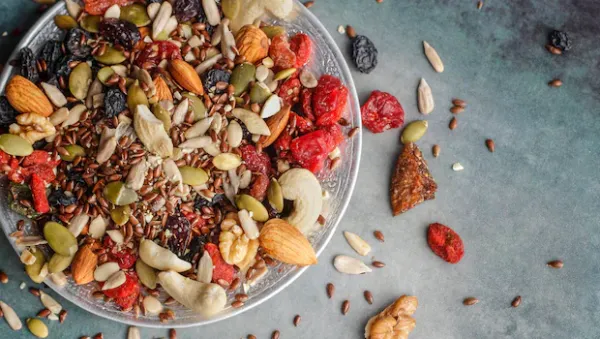
Both oats and granola are popular breakfast options for people focused on health and weight loss. They are both made from whole grains, both offer plenty of fibre, and both aim to keep you full through the morning. But there is a key difference in how they are prepared. Oats are simple, unprocessed, and low in calories, while granola is baked with added honey, oil, nuts and dried fruits, which adds flavor but also increases calories and sugar. So if you want to lose weight, which one deserves your attention in the morning bowl? Here is a detailed look to help you decide.
Photo Credit: Unsplash
To understand which is better for weight loss, it is useful to begin with what they are made from and how they are processed.
Oats are whole grains that come in different formats, such as rolled oats, steel-cut oats, or instant oats. They are rich in beta-glucan, a soluble fiber that helps lower cholesterol, regulate blood sugar, and support better satiety. Oats are minimally processed, mainly just oat groats that are steamed, rolled flat, or cut into smaller pieces.
Granola starts with rolled oats too, but it is usually combined with nuts, seeds and sweeteners like honey or maple syrup, then baked to create crunch. While both begin as wholesome oats, granola typically contains more added fats and sugars to enhance flavor and texture. Some packaged granola varieties contain as much sugar as desserts, which is something to consider while choosing breakfast for weight control.

Consultant Nutritionist Rupali Datta says, “Choosing oats or granola for weight loss depends a lot on the amount of sugar and fat in your bowl. Plain oats provide nutrition without unnecessary calories, which makes them a smarter everyday choice.”
Below is a quick comparison of both breakfast options that can help with better weight decisions:
| Nutrient (per 40g serving) | Plain Oats | Granola (Store Bought) |
| Calories | 150 kcal | 200 to 250 kcal |
| protein | 5g | 4 to 7g |
| fiber | 4g | 3 to 4g |
| fat | 2.5g | 6 to 8g |
| Sugar | 0g (unsweetened) | 8 to 12g |
| Carbohydrates | 27g | 28 to 35g |
Oats are naturally low in sugar and fat, while granola becomes calorie-heavy with added sweeteners and oils. People who want to lose weight often underestimate serving sizes, which can lead to more calorie intake through granola.
A 100g comparison highlights the contrast as well. Oats contain 389 calories with 16.9g protein and almost zero sugar. In comparison, granola contains 489 calories with 13.7g protein and nearly 20g sugar. This shows why portion control matters if granola is part of a weight loss routine.

Fiber is a major factor when it comes to choosing oats or granola for weight loss. Both food items provide fiber, which supports digestion, helps control hunger, and reduces overeating. However, oats offer pure soluble fiber, especially beta-glucan, without added sugar. This supports stable blood sugar levels and steady energy throughout the morning, an important part of a weight loss routine.
Rupali Datta explains, “Foods rich in soluble fiber slow down digestion and increase fullness, which helps reduce the urge to snack unnecessarily.”
Granola does provide fiber and some protein thanks to the nuts and seeds in it. But if it contains too much sugar, it may cause a quick increase in blood sugar followed by a sudden drop, which may increase hunger sooner. Oats digest more slowly, promoting long-lasting fullness and helping manage appetite, which is a smart advantage for weight loss goals.

If losing weight is your focus, plain oats emerge as a clear winner. They are lower in calories, help keep you satisfied for longer, and can be paired with fruits, nuts or yogurt for a nutrient-rich breakfast without unnecessary calories.
Granola can still fit into a balanced diet when eaten carefully. It works well as a topping instead of a full bowl. Controlled servings and low-sugar brands can make granola a useful addition rather than a calorie-heavy breakfast. Homemade versions offer even better control over sweetness and oils, creating a healthier alternative.
If you enjoy granola, there is no need to cut it out completely. Here is a lighter homemade version that feels satisfying without overloading sugar.

Photo Credit: iStock
Nutrition per serving one by four cup: about 180 to 190 calories, 5g protein, 4g fiber, 4 to 5g sugar.
Both oats and granola can support a healthier lifestyle when used wisely, and the approach can make a big difference.

Photo Credit: iStock
Granola has more uses than just the morning bowl. It adds texture, flavor and satisfaction to various snacks and desserts.

Both oats and granola bring health benefits to the table. But for weight loss, plain oats provide a stronger advantage. They are simple, filling, versatile, and naturally low in calories and sugar. Granola tastes great but is best in controlled portions, especially when store-bought with higher sugar levels. A practical solution is using oats as the main breakfast and adding a small amount of homemade granola for crunch.
This way, you do not sacrifice taste while supporting weight loss goals. The focus should not be on removing foods you like but choosing the ones that truly work for your health and progress.
Rupali Datta says, “Weight loss is not about eliminating foods that you enjoy. It is about paying attention to ingredients and portions so that every meal supports your goals without making you feel deprived.”